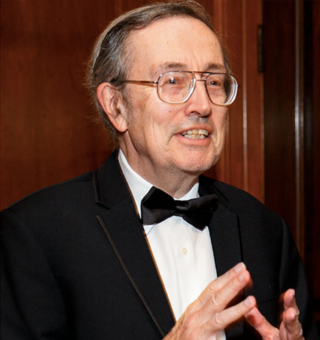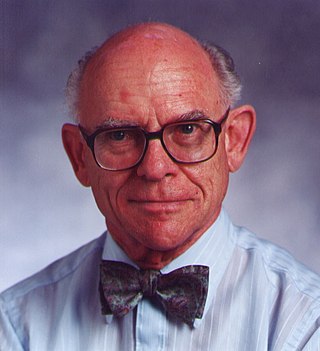
Inorganic chemistry deals with synthesis and behavior of inorganic and organometallic compounds. This field covers chemical compounds that are not carbon-based, which are the subjects of organic chemistry. The distinction between the two disciplines is far from absolute, as there is much overlap in the subdiscipline of organometallic chemistry. It has applications in every aspect of the chemical industry, including catalysis, materials science, pigments, surfactants, coatings, medications, fuels, and agriculture.

Some chemical authorities define an organic compound as a chemical compound that contains carbon–hydrogen or carbon–carbon bonds; others consider an organic compound to be any chemical compound that contains carbon. For example, carbon-containing compounds such as alkanes and its derivatives are universally considered organic, but many others are sometimes considered inorganic, such as halides of carbon without carbon-hydrogen and carbon-carbon bonds, and certain compounds of carbon with nitrogen and oxygen.

Organometallic chemistry is the study of organometallic compounds, chemical compounds containing at least one chemical bond between a carbon atom of an organic molecule and a metal, including alkali, alkaline earth, and transition metals, and sometimes broadened to include metalloids like boron, silicon, and selenium, as well. Aside from bonds to organyl fragments or molecules, bonds to 'inorganic' carbon, like carbon monoxide, cyanide, or carbide, are generally considered to be organometallic as well. Some related compounds such as transition metal hydrides and metal phosphine complexes are often included in discussions of organometallic compounds, though strictly speaking, they are not necessarily organometallic. The related but distinct term "metalorganic compound" refers to metal-containing compounds lacking direct metal-carbon bonds but which contain organic ligands. Metal β-diketonates, alkoxides, dialkylamides, and metal phosphine complexes are representative members of this class. The field of organometallic chemistry combines aspects of traditional inorganic and organic chemistry.

Sir Geoffrey Wilkinson FRS was a Nobel laureate English chemist who pioneered inorganic chemistry and homogeneous transition metal catalysis.

Robert Howard Crabtree is a British-American chemist. He is serving as Conkey P. Whitehead Professor Emeritus of Chemistry at Yale University in the United States. He is a naturalized citizen of the United States. Crabtree is particularly known for his work on "Crabtree's catalyst" for hydrogenations, and his textbook on organometallic chemistry.

Philip Patrick Power is a Distinguished Professor of Chemistry at the University of California, Davis. He has contributed to the synthesis, structure, and physical and chemical characterization of inorganic and organometallic compounds. His research focuses on low-coordinate main group and transition metal compounds. Much of this work hinges on the use of sterically crowded ligands to stabilize unusual geometries.
Jack Halpern was an inorganic chemist, the Louis Block Distinguished Service Professor of Chemistry at the University of Chicago. Born in Poland, he moved to Canada in 1929 and the United States in 1962.

Malcolm Leslie Hodder Green was Professor of Inorganic Chemistry at the University of Oxford. He made many contributions to organometallic chemistry.

Frank Albert Cotton FRS was an American chemist. He was the W.T. Doherty-Welch Foundation Chair and Distinguished Professor of Chemistry at Texas A&M University. He authored over 1600 scientific articles. Cotton was recognized for his research on the chemistry of the transition metals.
Tobin Jay Marks is an inorganic chemistry Professor, the Vladimir N. Ipatieff Professor of Catalytic Chemistry, Professor of Material Science and Engineering, Professor of Chemical and Biological Engineering, and Professor of Applied Physics at Northwestern University in Evanston, Illinois. Among the themes of his research are synthetic organo-f-element and early-transition metal organometallic chemistry, polymer chemistry, materials chemistry, homogeneous and heterogeneous catalysis, molecule-based photonic materials, superconductivity, metal-organic chemical vapor deposition, and biological aspects of transition metal chemistry.
Joseph Chatt was a renowned British researcher in the area of inorganic and organometallic chemistry. His name is associated with the description of the pi-bond between transition metals and alkenes, the Dewar–Chatt–Duncanson model.
John Stuart Anderson FRS, FAA, was a British and Australian scientist who was Professor of Chemistry at the University of Melbourne and Professor of Inorganic Chemistry at the University of Oxford.
Anthony F. Hill is a Professor of Chemistry at the Research School of Chemistry of the Australian National University. He specializes in synthetic, organometallic and coordination chemistry. He is the author of a textbook on the subject of the organometallic chemistry of the transition metals and since 1995 has been an editor of the scientific journal/book series Advances in Organometallic Chemistry. He is a fellow of the Royal Society of Chemistry.

Peter Michael Maitlis, FRS was a British organometallic chemist.
Harry Julius Emeléus CBE, FRS was a leading English inorganic chemist and a professor in the department of chemistry, Cambridge University.

Norman Neill Greenwood FRS CChem FRSC was an Australian-British chemist and Emeritus Professor at the University of Leeds. Together with Alan Earnshaw, he wrote the textbook Chemistry of the Elements, first published in 1984.
Geoffrey Edward Coates was an English organometallic chemist and academic. He developed the basics for new materials in plastics, semiconductors and pharmaceuticals.
T. Don Tilley is a professor of chemistry at the University of California, Berkeley.

Sodium naphthalene is an organic salt with the chemical formula Na+[C10H8]−. In the research laboratory, it is used as a reductant in the synthesis of organic, organometallic, and inorganic chemistry. It is usually generated in situ. When isolated, it invariably crystallizes as a solvate with ligands bound to Na+.

Lithium naphthalene is an organic salt with the chemical formula Li+[C10H8]−. In the research laboratory, it is used as a reductant in the synthesis of organic, organometallic, and inorganic chemistry. It is usually generated in situ. Lithium naphthalene crystallizes with ligands bound to Li+. The anion is a well-known example of an organic radical.












